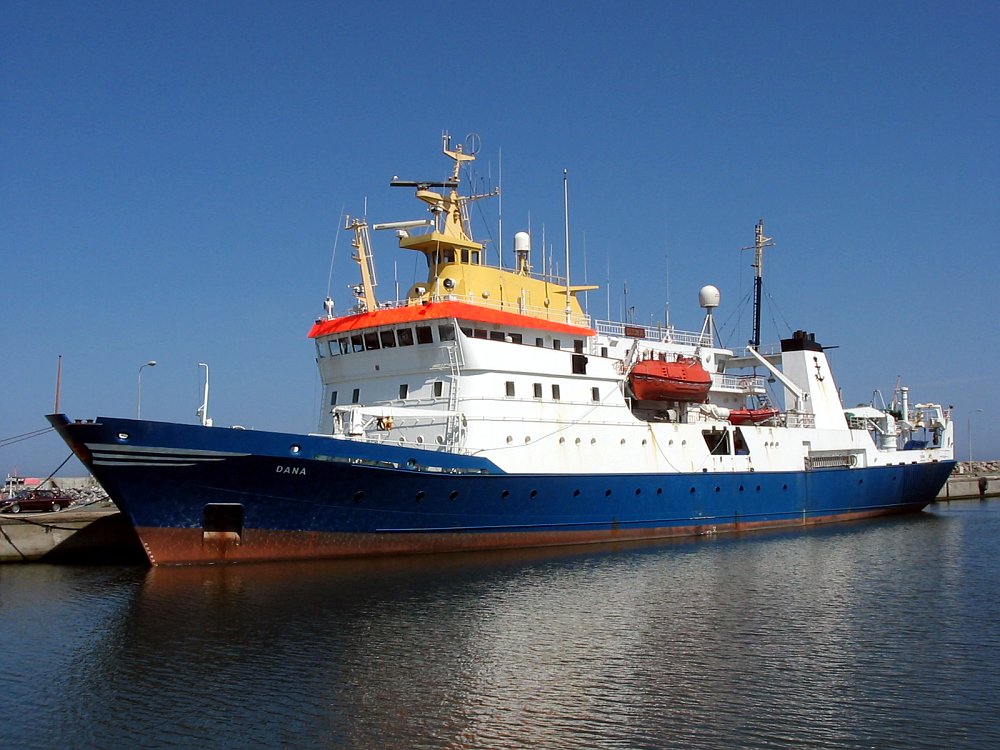|
Einar Koefoed
Einar Laurentius Koefoed (1875–1963) was a Danish-born marine biologist who spent most of his professional career in Norway. Taxon named in his honor ''Searsia koefoedi'' (Koefoed's searsid) is named after Einar Koefoed. Also the genus ''Einara'' might be named after him. Taxon described by him *See :Taxa named by Einar Laurentius Koefoed References {{DEFAULTSORT:Koefoed, Einar Laurentius 1875 births 1963 deaths Fisheries scientists 20th-century Danish zoologists 20th-century Norwegian zoologists ... [...More Info...] [...Related Items...] OR: [Wikipedia] [Google] [Baidu] |
Copenhagen
Copenhagen ( ) is the capital and most populous city of Denmark, with a population of 1.4 million in the Urban area of Copenhagen, urban area. The city is situated on the islands of Zealand and Amager, separated from Malmö, Sweden, by the Øresund strait. The Øresund Bridge connects the two cities by rail and road. Originally a Vikings, Viking fishing village established in the 10th century in the vicinity of what is now Gammel Strand, Copenhagen became the capital of Denmark in the early 15th century. During the 16th century, the city served as the ''de facto'' capital of the Kalmar Union and the seat of the Union's monarchy, which governed most of the modern-day Nordic countries, Nordic region as part of a Danish confederation with Sweden and Norway. The city flourished as the cultural and economic centre of Scandinavia during the Renaissance. By the 17th century, it had become a regional centre of power, serving as the heart of the Danish government and Military history ... [...More Info...] [...Related Items...] OR: [Wikipedia] [Google] [Baidu] |
Bergen
Bergen (, ) is a city and municipalities of Norway, municipality in Vestland county on the Western Norway, west coast of Norway. Bergen is the list of towns and cities in Norway, second-largest city in Norway after the capital Oslo. By May 2025 the population is 294 029 according to Statistics Norway. The municipality covers and is on the peninsula of Bergenshalvøyen. The city centre and northern neighbourhoods are on Byfjorden (Hordaland), Byfjorden, 'the city fjord'. The city is surrounded by mountains, causing Bergen to be called the "city of Seven Mountains, Bergen, seven mountains". Many of the extra-municipal suburbs are on islands. Bergen is the administrative centre of Vestland county. The city consists of eight boroughs: Arna, Bergen, Arna, Bergenhus, Fana, Bergen, Fana, Fyllingsdalen, Laksevåg, Ytrebygda, Årstad, Bergen, Årstad, and Åsane. Trading in Bergen may have started as early as the 1020s. According to tradition, the city was founded in 1070 by King Ol ... [...More Info...] [...Related Items...] OR: [Wikipedia] [Google] [Baidu] |
Norwegian Institute Of Marine Research
The Norwegian Institute of Marine Research () is a national consultative research institute which is owned by the Ministry of Fisheries and Coastal Affairs. The institute performs research and provides advisory services in the fields of marine ecosystems and aquaculture. With a staff of almost 1100, the Institute of Marine Research is the largest centre of marine research in Norway, and among the largest in Europe. The institute has a highly qualified scientific staff, high-technology research stations and laboratories in Austevoll, Bergen (head office), Flødevigen ( Arendal) and Matre, a department in Tromsø and several vessels. The primary responsibility of the Institute of Marine Research is to provide advice to national authorities, society and industry regarding questions related to the ecosystems of the Barents Sea, the Norwegian Sea, the North Sea and the Norwegian coastal zone and in the field of aquaculture. The institute is heavily engaged in development aid activit ... [...More Info...] [...Related Items...] OR: [Wikipedia] [Google] [Baidu] |
Fisheries Science
Fisheries science is the academic discipline of managing and understanding fisheries. It is a multidisciplinary science, which draws on the disciplines of limnology, oceanography, freshwater biology, marine biology, meteorology, conservation, ecology, population dynamics, economics, statistics, decision analysis, management, and many others in an attempt to provide an integrated picture of fisheries. In some cases new disciplines have emerged, as in the case of bioeconomics and fisheries law. Because fisheries science is such an all-encompassing field, fisheries scientists often use methods from a broad array of academic disciplines. Over the most recent several decades, there have been declines in fish stocks (populations) in many regions along with increasing concern about the impact of intensive fishing on marine and freshwater biodiversity. Fisheries science is typically taught in a university setting, and can be the focus of an undergraduate, master's or Ph.D. progra ... [...More Info...] [...Related Items...] OR: [Wikipedia] [Google] [Baidu] |
Ichthyology
Ichthyology is the branch of zoology devoted to the study of fish, including bony fish (Osteichthyes), cartilaginous fish (Chondrichthyes), and jawless fish (Agnatha). According to FishBase, 35,800 species of fish had been described as of March 2025, with approximately 250 new species described each year. Etymology The word is derived from the Ancient Greek words ἰχθύς, ''ikhthus'', meaning "fish"; and λόγος, ''logos'', meaning "study". History The study of fish dates from the Upper Paleolithic Revolution (with the advent of "high culture"). The science of ichthyology was developed in several interconnecting epochs, each with various significant advancements. The study of fish receives its origins from humans' desire to feed, clothe, and equip themselves with useful implements. According to Michael Barton, a prominent ichthyologist and professor at Centre College, "the earliest ichthyologists were hunters and gatherers who had learned how to obtain the most use ... [...More Info...] [...Related Items...] OR: [Wikipedia] [Google] [Baidu] |
Searsia Koefoedi
''Searsia koefoedi'', or Koefoed's searsid, is a species of tubeshoulder found in the oceans at depths of from . It is named after Norwegian marine biologist Einar Koefoed. Size This species grows to a length of SL. Habitat and distribution ''Searsia koefoedi'' can be found in a marine environment within a depth range of . They live in deep-water environments. They are native to the areas of Eastern Atlantic, Denmark Strait, the Gulf of Guinea Northwest Atlantic in subtropical waters, Indian and Pacific oceans within tropical waters. Etymology The fish is named in honor of Norwegian marine biologist Einar Koefoed Einar Laurentius Koefoed (1875–1963) was a Danish-born marine biologist who spent most of his professional career in Norway. Taxon named in his honor ''Searsia koefoedi'' (Koefoed's searsid) is named after Einar Koefoed. Also the genus ''Ei ... (1875–1963), who was responsible for the collected part of the type specimens in 1926 and who authored several pa ... [...More Info...] [...Related Items...] OR: [Wikipedia] [Google] [Baidu] |
Einara
''Einara'' is a small genus of slickheads found in the deep waters of the oceans. They can grow to standard length The etymology of the genus name is uncertain but could refer Norwegian marine biologist Einar Koefoed. Species There are currently two recognized species A species () is often defined as the largest group of organisms in which any two individuals of the appropriate sexes or mating types can produce fertile offspring, typically by sexual reproduction. It is the basic unit of Taxonomy (biology), ... in this genus: * '' Einara edentula'' ( Alcock, 1892) (toothless smooth-head) * '' Einara macrolepis'' ( Koefoed, 1927) (loosescale smooth-head) References Alepocephalidae Ray-finned fish genera Marine fish genera Taxa named by Albert Eide Parr {{Alepocephaliformes-stub ... [...More Info...] [...Related Items...] OR: [Wikipedia] [Google] [Baidu] |
1875 Births
Events January * January 1 – The Midland Railway of England abolishes the Second Class passenger category, leaving First Class and Third Class. Other British railway companies follow Midland's lead during the rest of the year (Third Class is renamed Second Class in 1956). * January 5 – The Palais Garnier, one of the most famous opera houses in the world, is inaugurated as the home of the Paris Opera. * January 12 – Guangxu Emperor, Guangxu becomes the 11th Qing dynasty Emperor of China at the age of 3. He succeeds his cousin, the Tongzhi Emperor, who had no sons of his own. * January 14 – The newly proclaimed King Alfonso XII of Spain (Queen Isabella II's son) arrives in Spain to restore the monarchy during the Third Carlist War. * January 24 – Camille Saint-Saëns' orchestral ''Danse macabre (Saint-Saëns), Danse macabre'' receives its première. February * February 3 – Third Carlist War: Battle of Lácar – Carlist commander Torcuat ... [...More Info...] [...Related Items...] OR: [Wikipedia] [Google] [Baidu] |
1963 Deaths
Events January * January 1 – Bogle–Chandler case: Commonwealth Scientific and Industrial Research Organisation scientist Dr. Gilbert Bogle and Mrs. Margaret Chandler are found dead (presumed poisoned), in bushland near the Lane Cove River, Sydney, Australia. * January 2 – Vietnam War – Battle of Ap Bac: The Viet Cong win their first major victory. * January 9 – A January 1963 lunar eclipse, total penumbral lunar eclipse is visible in the Americas, Europe, Africa and Asia, and is the 56th lunar eclipse of Lunar Saros 114. Gamma has a value of −1.01282. It occurs on the night between Wednesday, January 9 and Thursday, January 10, 1963. * January 13 – 1963 Togolese coup d'état: A military coup in Togo results in the installation of coup leader Emmanuel Bodjollé as president. * January 17 – A last quarter moon occurs between the January 1963 lunar eclipse, penumbral lunar eclipse and the Solar eclipse of January 25, 1963, annular solar ... [...More Info...] [...Related Items...] OR: [Wikipedia] [Google] [Baidu] |
Fisheries Scientists
Fisheries science is the academic discipline of managing and understanding fisheries. It is a multidisciplinary science, which draws on the disciplines of limnology, oceanography, freshwater biology, marine biology, meteorology, conservation, ecology, population dynamics, economics, statistics, decision analysis, management, and many others in an attempt to provide an integrated picture of fisheries. In some cases new disciplines have emerged, as in the case of bioeconomics and fisheries law. Because fisheries science is such an all-encompassing field, fisheries scientists often use methods from a broad array of academic disciplines. Over the most recent several decades, there have been declines in fish stocks (populations) in many regions along with increasing concern about the impact of intensive fishing on marine and freshwater biodiversity. Fisheries science is typically taught in a university setting, and can be the focus of an undergraduate, master's or Ph.D. program. So ... [...More Info...] [...Related Items...] OR: [Wikipedia] [Google] [Baidu] |




